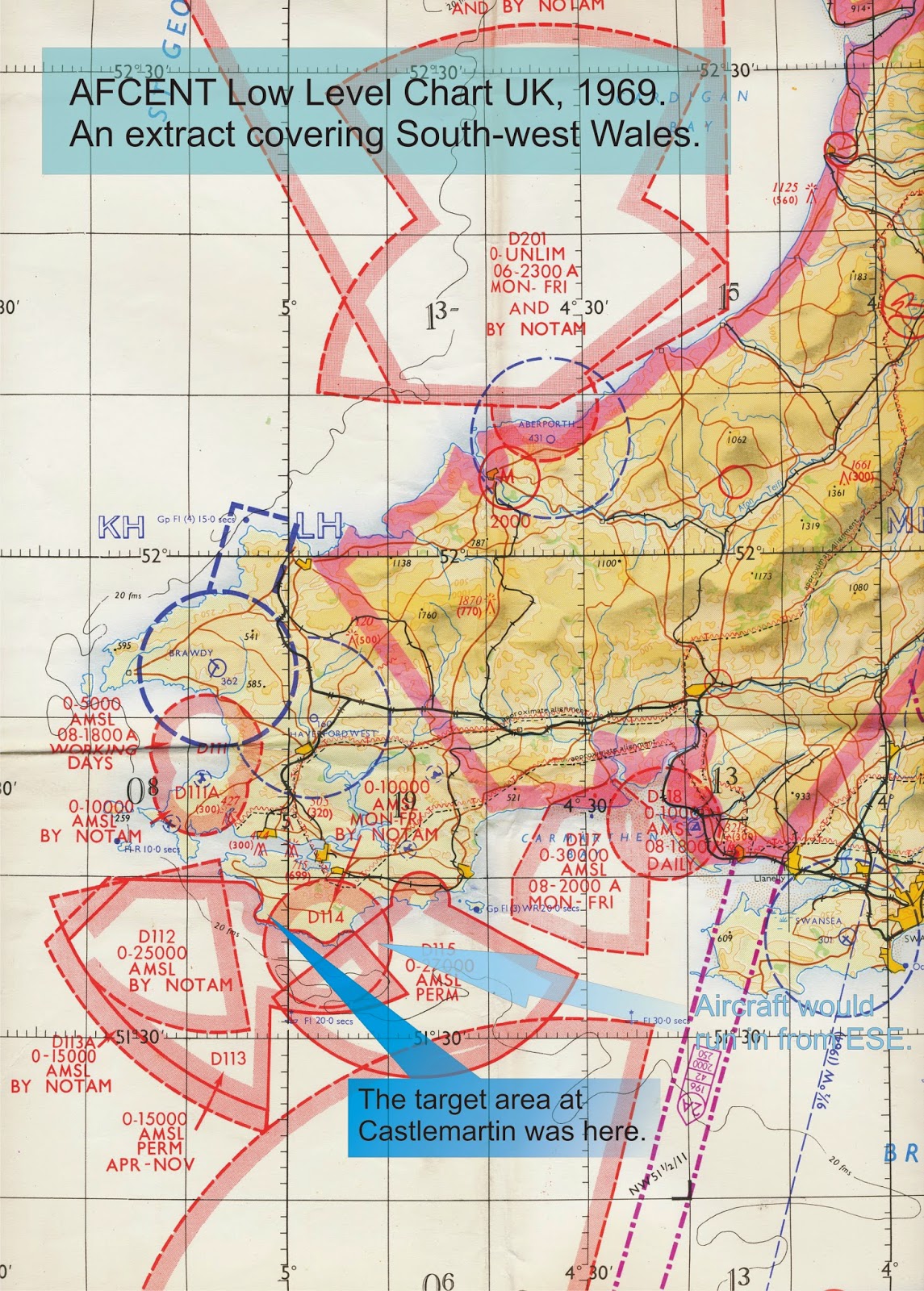Watching the Birdie!!
How do you take a photograph, from a high speed aircraft at night and at low level? You use a flash!
A lot of my plane spotting, in the 1970s, was carried out from the south facing bathroom window of our house in Pembroke Dock. From here you had an expansive view of the sky towards the Royal Armoured Corps Range (RACR) Castlemartin. This was before the ash trees, with their rookery, became so tall that they blocked the view.
 |
| Location of map extracts below in UK |
You could not actually see the land surface of the range - that was about 4.5 miles to the south and behind the next row of houses on the skyline 400 yards across the valley. The line of chimney pots provided good markers on the horizon!
We were used to the sound of gun fire from the range and there were usually "night shoots" twice a week, which also lit up the southern sky with orange flashes. However, I soon began to notice that on some nights - often Tuesdays and Thursdays in the winter - that the signature of the "firing" was different. Five equally spaced intense white flashes, followed by five dull thumps. This post is about these flashes and begins to explain what was going on.
 |
| Fig. 1: An extract from an Operational Navigation Chart showing Pembrokeshire, Wales, UK This is from sheet ONC E-1 Edition 8-GSGS (1993) |
Both Royal Air Force (RAF) and United States Air Force (USAF) used the range for night training sorties, as well as the occasional day time mission, often as part of larger exercises and competitions such as Exercise Lifeline and the annual NATO Royal Flush contest.
The nights when the range was booked by the RAF or USAF were always published in advance in the "Warning Notice of Firing" for Castlemartin in the local press, so I knew when to hang out of the bathroom window with my metaphorical anorak on!
The American aircraft (RF-4C Phantoms) often arrived during dusk, before the sky became totally dark.
 |
| Fig. 3: Unit badge of the 1st Tactical Reconnaissance Squadron, one of the constituent units of the 10th TRW |
The RAF always arrived on scene long after the sun had set.The aircraft were Canberra PR Mk 7s or PR Mk 9s from RAF Wyton, just down the road from the Americans at Alconbury, or the RAF "clutch" airfields in West Germany - Laarbruch, Gutersloh and Wilderath.
.jpg) |
| Fig. 4: RF-4C of 10th TRW getting airborne from RAF Alconbury. Notice the grey/white naval style colour scheme and buzz number FJ-077. c1965 |
To the right (Fig. 4) is a photograph of such an aircraft getting airborne from its home base in Huntingdonshire.
The RAF sorties were flown by various versions of the Canberra. The photograph below (Fig. 5) shows the PR Mk. 7 version of this long-serving type.
 |
| Fig. 5: Canberra PR Mk 7, in a camouflage scheme worn at the end of its RAF career. |
For more information about the Canberra and its photo reconnaissance role in the RAF see the website below.
http://www.airrecce.co.uk/postww2/ac/Canberra/Canberra.html
 |
| Fig. 6: 13(PR) Sqn, RAF - their Canberra PR Mk. 9s were the last RAF Canberras to carry out photo-flash sorties. |
In the second part of this post I will describe what went on over the range in more detail.

.jpg)
No comments:
Post a Comment
If you can add to the information in any of my blog postings, or have a question, please write a comment, or use the contact form I will endeavour to respond as soon as I can.